History and Prehistory
8,000 BC
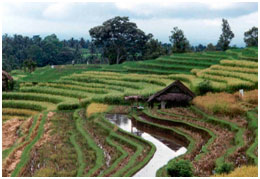 The template for the development of modern hydraulics was born long before the time of the ancient Greeks, who produced the first recognisable hydraulic devices. In the plains of India or in the Fertile Crescent of Mesopotamia our earliest civilisations, with their many ingenious irrigation methods, opening and closing channels, storing water and throttling or diverting flow, provided the intellectual basis for the development of fluid power thousands of years later.
The template for the development of modern hydraulics was born long before the time of the ancient Greeks, who produced the first recognisable hydraulic devices. In the plains of India or in the Fertile Crescent of Mesopotamia our earliest civilisations, with their many ingenious irrigation methods, opening and closing channels, storing water and throttling or diverting flow, provided the intellectual basis for the development of fluid power thousands of years later.
To lighten our subject matter a little, we decided to add the section you see below. It comprises several historical facts, all of which are a part of the foundation of the fascinating science of (water) hydraulics.

Thales
624 – 546 BC
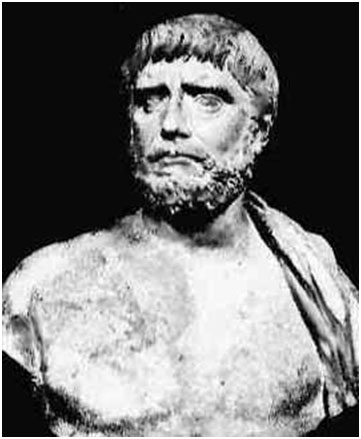 The Greek Thales, often described as the world's first scientist, declared water a substance rather than a mystic gift from the gods, thus paving the way for future research into water, and probably much irritating the local priesthood at the same time.
The Greek Thales, often described as the world's first scientist, declared water a substance rather than a mystic gift from the gods, thus paving the way for future research into water, and probably much irritating the local priesthood at the same time.
Aristotle
384 – 322 BC
 Aristotle, born in the Chalcidice of ancient Greece, was the first to declare water a continuum, a seemingly trivial fact, but one upon which all of hydraulics is based.
Aristotle, born in the Chalcidice of ancient Greece, was the first to declare water a continuum, a seemingly trivial fact, but one upon which all of hydraulics is based.
The fact that what happens at A is somehow transmitted to B, is fundamental to our science.
Ktesibios
285 – 222 BC
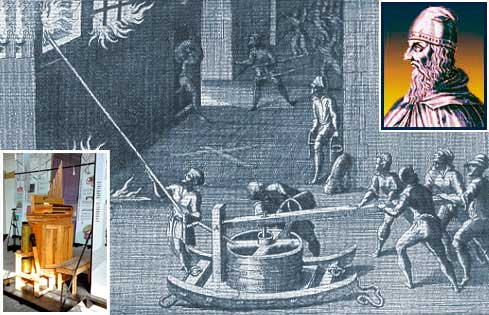 Ktesibios was born in Alexandria, then a Greek colony. He was perhaps the first of the ancient Greeks who was truly mechanically gifted. He made a great many devices, most of them based on practical expressions of the hydraulic principles established by his ancestors.
Ktesibios was born in Alexandria, then a Greek colony. He was perhaps the first of the ancient Greeks who was truly mechanically gifted. He made a great many devices, most of them based on practical expressions of the hydraulic principles established by his ancestors.
Some of them, the organ and the fire siphon, remained in use for a thousand years beyond his time.
Archimedes
287 – 212 BC
 Archimedes, born in Sicily, then a Greek colony, in 287 BC was one of those people who seemed to be a few hundred years ahead of his time.
Archimedes, born in Sicily, then a Greek colony, in 287 BC was one of those people who seemed to be a few hundred years ahead of his time.
In addition to confirming that the effects of a disturbance in a closed system at 'A' will be seen at 'B', he was also the first to state that the existence of a pressure gradient was essential to flow.
Da Vinci
1452 – 1519
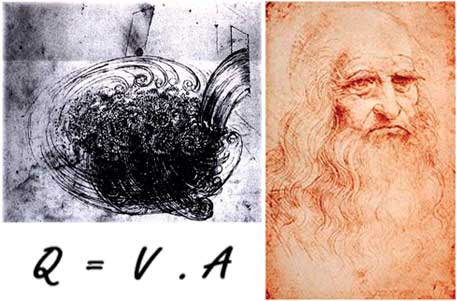 Da Vinci's genius was so multi-facetted, that the work he did on hydraulics, though of great importance, is almost buried beneath the products of his other talents.
Da Vinci's genius was so multi-facetted, that the work he did on hydraulics, though of great importance, is almost buried beneath the products of his other talents.
He was the first to offer this mathematical formula as a means of calculating volume flow. He may also have been the first person to apply closed loop control, using his talents to regulate the flow of water past a mill wheel.
Simon Stevin
1548 - 1620
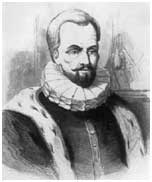 The Dutchman Stevin was the first to make a distinction between ideal and viscose fluids.
The Dutchman Stevin was the first to make a distinction between ideal and viscose fluids.
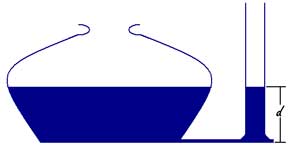 He also accurately defined pressure as the product of head (i.e. vertical height) and area, irrespective of the shape of the container. He thus solved the hydraulic paradox, a mystery which itself has now vanished into the mists of time, which had confused medieval scientists for hundreds of years.
He also accurately defined pressure as the product of head (i.e. vertical height) and area, irrespective of the shape of the container. He thus solved the hydraulic paradox, a mystery which itself has now vanished into the mists of time, which had confused medieval scientists for hundreds of years.
Evangelista Torricelli
1608 - 1647
 Like his contemporary Galileo, Torricelli was a heliocentrist, someone who believed the Earth turned about the sun and not vice versa.
Like his contemporary Galileo, Torricelli was a heliocentrist, someone who believed the Earth turned about the sun and not vice versa.
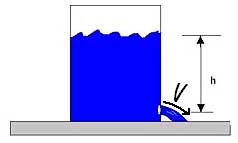 This got him, as it did Galileo, into trouble with the local church (= Vatican) but it did not hinder his experiments into barometrics and the relationship between outflow and head.
This got him, as it did Galileo, into trouble with the local church (= Vatican) but it did not hinder his experiments into barometrics and the relationship between outflow and head.
Blaise Pascal
1623 - 1662
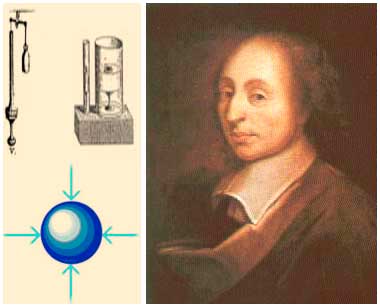 Pascal, mathematician, physicist, philosopher and novelist, is perhaps the best known historical figure in hydraulics. He was born in Clermont, France.
Pascal, mathematician, physicist, philosopher and novelist, is perhaps the best known historical figure in hydraulics. He was born in Clermont, France.
He is responsible for the fundamental statement that in a static fluid the pressure is the same at any point, known today as Pascal's Law, though at the time it had the status only of a postulate. He also established the force area relationship of pressure, thus opening the way for future practical hydraulics engineers.
Robert Boyle
1627 - 1691
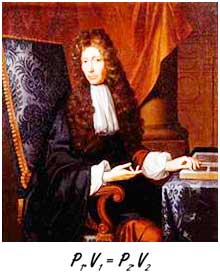 Boyle was born in Lismore, Ireland. He was what one in those days called a natural philosopher.
Boyle was born in Lismore, Ireland. He was what one in those days called a natural philosopher.
He established the relationship between pressure, temperature and volume, known today as Boyle's Law, indispensible for the application of gas ballasted accumulators.
Sir Isaac Newton
1643 - 1727
 Newton was born in a tiny village in Lincolnshire, England, at a time when the mathematics of Euclid still held sway.
Newton was born in a tiny village in Lincolnshire, England, at a time when the mathematics of Euclid still held sway.
At Cambridge, however, he preferred the newer trends of Keppler, Gallileo and Descartes. His Second Law is what allows hydraulics engineers to calculate pressure required in a mass-based system.
Daniel Bernouilli
1700 – 1782
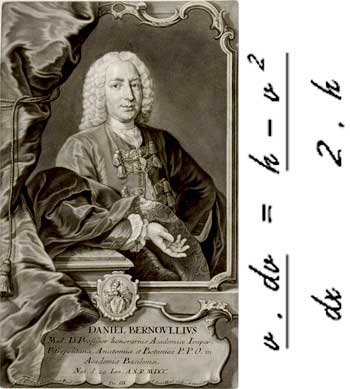 We must next mention Bernoulli. Born in 1700 in Groningen, Holland, Bernoulli established the relationship between flow velocity and local pressure.
We must next mention Bernoulli. Born in 1700 in Groningen, Holland, Bernoulli established the relationship between flow velocity and local pressure.
He was a close friend of the German mathematician Leonhard Euler, both of them lodging together whilst they held posts at the Academy in St Petersburg, Russia.
Leonhard Euler
1703 – 1783
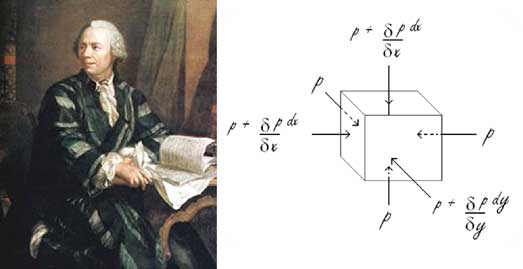 Euler developed a system of mathematics based upon particles, rather than points, which made an enormous difference to those investigating the particulate nature of fluids. Until then only Euclidian mathematics could be applied, which meant that every equation which was developed, disappeared up its own mathematical anus so to speak, leaving the researcher with nothing.
Euler developed a system of mathematics based upon particles, rather than points, which made an enormous difference to those investigating the particulate nature of fluids. Until then only Euclidian mathematics could be applied, which meant that every equation which was developed, disappeared up its own mathematical anus so to speak, leaving the researcher with nothing.
From Euler's time onwards the way was open for serious theoretical research into fluids, very much in the manner to which we are accustomed today.
Joseph Bramah
1748 - 1814
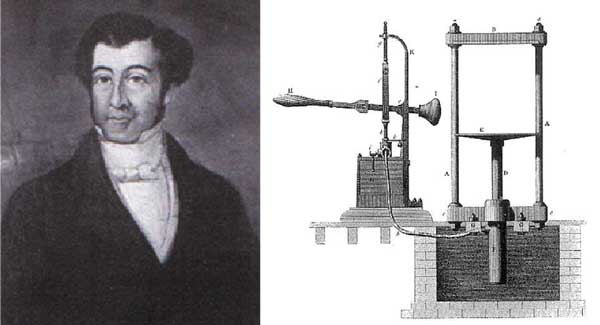 It is the end of the 18th C and the industrial revolution has already begun. We leave behind us the time of the great thinkers and experimenters and join those who found practical applications for the concepts I have just presented. Or, in other words, they found ways of making money out of them.
It is the end of the 18th C and the industrial revolution has already begun. We leave behind us the time of the great thinkers and experimenters and join those who found practical applications for the concepts I have just presented. Or, in other words, they found ways of making money out of them.
In November of 1795 Joseph Bramah, a cabinet maker from Yorkshire, England, patented the first functioning hydraulic press.
Sir William George Armstrong
1810 - 1900
 Practical nineteenth century hydraulics belongs to a Newcastle engineer by the name of William Armstrong. Always mechanically minded he trained initially as a lawyer at the behest of his father. However, he was so intrigued by a water wheel he saw whilst on a local fishing expedition, that he went straight home and designed a more efficient version, it was possibly the world's first positive displacement water motor.
Practical nineteenth century hydraulics belongs to a Newcastle engineer by the name of William Armstrong. Always mechanically minded he trained initially as a lawyer at the behest of his father. However, he was so intrigued by a water wheel he saw whilst on a local fishing expedition, that he went straight home and designed a more efficient version, it was possibly the world's first positive displacement water motor.
This did not immediately make him a rich man but the damage was done, and from then on he was a confirmed water hydraulics addict.
Pivotal Moments in hydraulic history...
Water Towers
(till 1851)
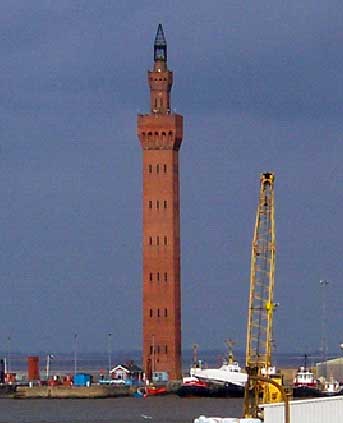
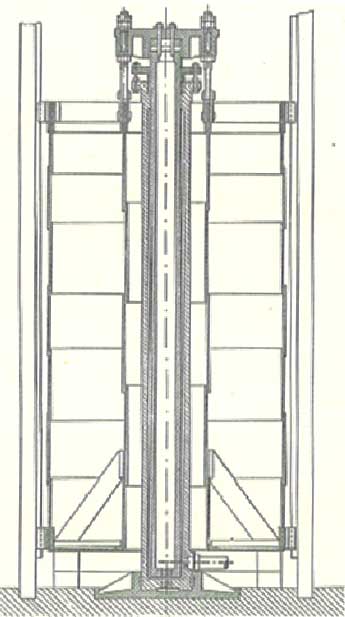 One of the problems the 19th Century hydraulics engineer had to face, at least until the 1850's, was that of storage. The only way to store pressure was to raise water some distance above the point at which it was to be used. This made life for those potential users who did not live close to a convenient hill rather awkward.
One of the problems the 19th Century hydraulics engineer had to face, at least until the 1850's, was that of storage. The only way to store pressure was to raise water some distance above the point at which it was to be used. This made life for those potential users who did not live close to a convenient hill rather awkward.
The only way of getting around this problem was to create an artificial hill, in other words to build a tower. Combining this need with the Victorian architect's penchant for elaborate structures produced some quite remarkable buildings.
In 1851 the weight loaded accumulator was introduced and the building stopped.
The Parting of the Ways
Williams & Janney's Axial Piston Pump and motor. ca. 1907
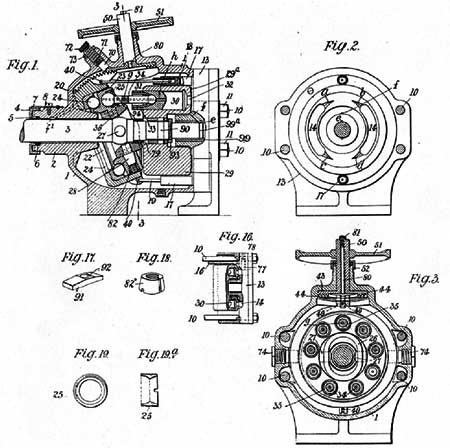 In the early 20th century two American engineers, Harvey Williams and Reynolds Janney developed the first axial piston devices, both pumps and motors. Together these formed something known at the time as the Waterbury transmission, named for the company which ultimately manufactured it.
In the early 20th century two American engineers, Harvey Williams and Reynolds Janney developed the first axial piston devices, both pumps and motors. Together these formed something known at the time as the Waterbury transmission, named for the company which ultimately manufactured it.
This is a very significant development because this was the first device which required that the hydraulic medium also be a lubricant. The materials of those days did not allow the use of water - and so oil hydraulics was born.
Rebirth
Fortune in Misfortune - 1956
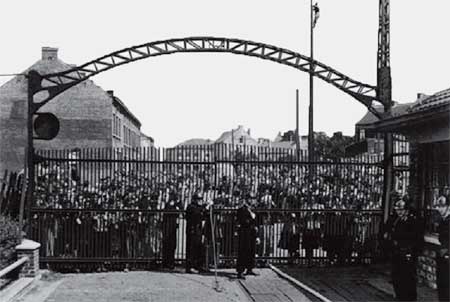 If it had not been for a tragic event which took place in Belgium in 1956, water hydraulics might have all but disappeared, and would have to have been largely re-invented for the needs of the modern, environmentally conscious world.
If it had not been for a tragic event which took place in Belgium in 1956, water hydraulics might have all but disappeared, and would have to have been largely re-invented for the needs of the modern, environmentally conscious world.
On the morning of August 8, 1956, 274 people were working in the colliery Bois du Cazier in Marcinelles, Belgium. A mining wagon placed incorrectly into the cage, hit an oil pipe and then severed the electricity cables as the cage began to move. The ensuing fire claimed the lives of all but 12 of the miners.
During the fifties, collieries played a vital role in the reconstruction of Europe. This appalling accident resulted in legislation which forced mine owners and equipment suppliers alike to use and develop water hydraulics components, which were seen, and are still seen, as a safe and acceptable alternative to oil. The rapid mechanisation of coal mining in Europe lead to ever increasing demands on manufacturers, so that components became more and more sophisticated.
This section by kind permission and in co-operation with the Tampere University of Technology (TUT), Finland Prof. Kari T. Koskinen.